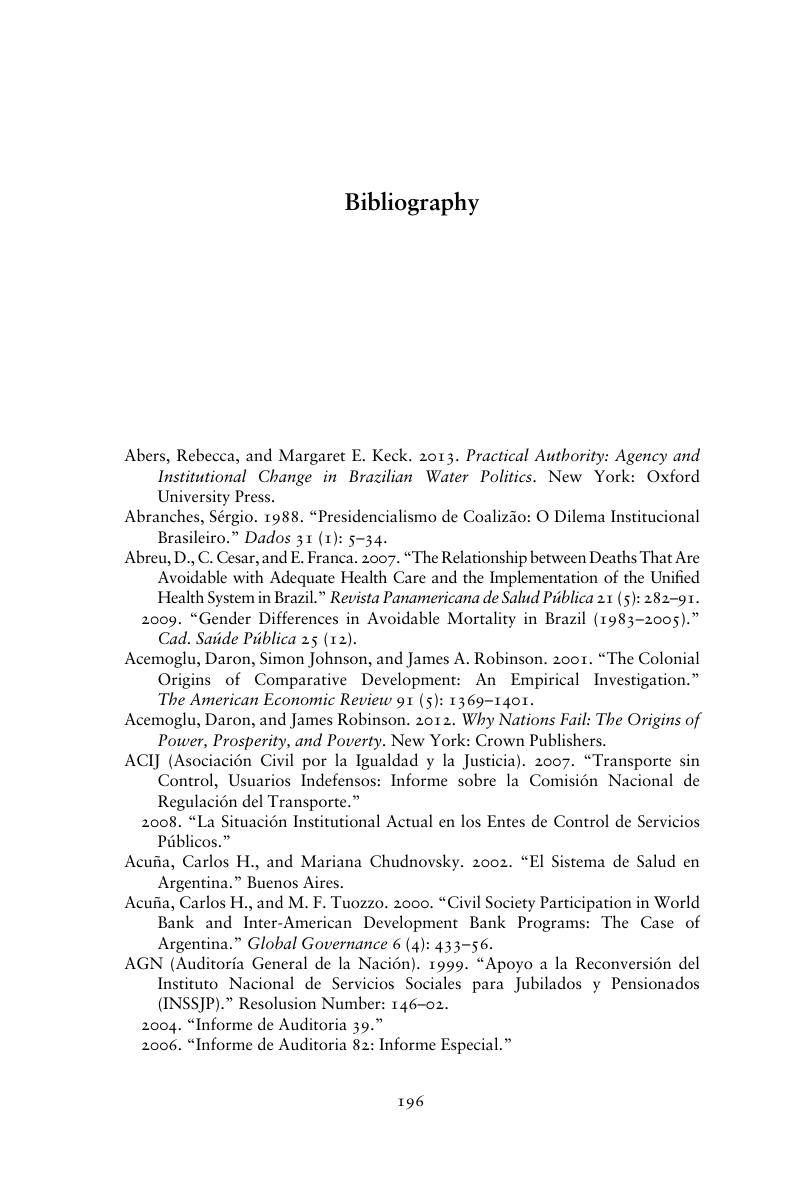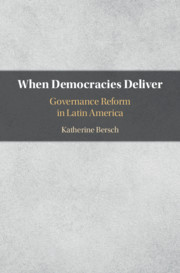Book contents
- When Democracies Deliver
- When Democracies Deliver
- Copyright page
- Contents
- Figures and Tables
- Acknowledgments
- 1 Introduction
- 2 The Merits of Problem Solving over Powering
- 3 An Explanation of Reform Type
- 4 Transportation in Argentina: Powering (Re-)Creates Crisis
- 5 Transportation in Brazil: Powering Curtailed, Problem Solving Inches Forward
- 6 Health in Argentina: Impeded Powering Fosters Problem Solving
- 7 Health in Brazil: Problem-Solving Success
- 8 Theoretical Conclusions and Comparative Perspectives
- Abbreviations
- Bibliography
- Index
- References
Bibliography
Published online by Cambridge University Press: 04 January 2019
- When Democracies Deliver
- When Democracies Deliver
- Copyright page
- Contents
- Figures and Tables
- Acknowledgments
- 1 Introduction
- 2 The Merits of Problem Solving over Powering
- 3 An Explanation of Reform Type
- 4 Transportation in Argentina: Powering (Re-)Creates Crisis
- 5 Transportation in Brazil: Powering Curtailed, Problem Solving Inches Forward
- 6 Health in Argentina: Impeded Powering Fosters Problem Solving
- 7 Health in Brazil: Problem-Solving Success
- 8 Theoretical Conclusions and Comparative Perspectives
- Abbreviations
- Bibliography
- Index
- References
Summary

- Type
- Chapter
- Information
- When Democracies DeliverGovernance Reform in Latin America, pp. 196 - 217Publisher: Cambridge University PressPrint publication year: 2019



